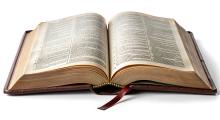Issued by the Catholic Center for Studies and Media - Jordan. Editor-in-chief Fr. Rif'at Bader - موقع أبونا abouna.org

When the Khmer Rouge was in power in Cambodia, the party killed about 1.7 million people, including nearly half of all Catholics. But then, 30 years ago, the devastated Church experienced a rebirth in a country in which the majority of the population is Buddhist. Today, the Catholic community remains a tiny minority—just 0.15 percent of a population of 16.7 million—but it has become integrated into the country.
The Catholic Church in Cambodia has come a very long way. During the Pol Pot regime (1975-1979), all religious and traditional cultural customs were suppressed, including both Buddhist and Christian religious observances. Nearly all churches were destroyed during this time, and a large number of priests and religious died. Half of the Catholic community perished.
In 1979, the war between Cambodia (which was called Democratic Kampuchea at the time) and Vietnam was followed by a civil war, which lasted until the late 1990s. Cambodia was ruled by Vietnamese communists from 1979 to 1989, and all forms of religious practice remained prohibited during this period. After the fall of the regime, Cambodia officially recognized the presence of Christians in the country on April 7, 1990. Seven days later, now 30 years ago, Mass was celebrated for the first time in 15 years. That celebration of the Easter vigil is remembered as the sign of the Church’s rebirth in Cambodia. At the time there were just 3,000 Catholics in the country.
One of them is an older woman who had been the only Catholic in her village of Prek-Toal for 15 years. The village is made up of houses built on bamboo rafts moored at the mouth of a river which flows from Battambang to Tonlé Sap Lake. “There were no priests, there was no Christian community to support her. However, at Christmas she gathered her neighbors together to celebrate the birth of Lord Jesus with her,” said missionary Father Totet Banaynaz. Since then, a mobile floating church has been built. Today, 50 baptized Catholics live in the village and a growing number of children and adults are preparing for Baptism and First Communion.
For 30 years, the Catholic Church, which today counts some 20,000 members, has been working to promote the faith, remaining true to the doctrine of the Church, while at the same time making the parables of Christ understandable for the local population. Bishop Oliver Schmitthaeusler, apostolic vicar for the Cambodian capital of Phnom Penh, spoke of “evangelization through art,” saying “art runs in the blood of the Cambodian people. For all of the people here, both children and adults, it is absolutely natural to dance and to sing,” the bishop said, explaining how the rich artistic and cultural heritage of Cambodia can be used for theater in the service of evangelization.
The Bible was translated into the Khmer language, which is also beneficial to the theatre initiatives. The bishop explained: “The people come here and see that we respect their culture. Many of them are Buddhists. However, little by little, they are coming to understand the meaning of the Gospel.” He added: “We are gradually getting a feel for how art, evangelization and respect for the culture can all work together to help us understand one another.”
Still, the scars left behind by the many years of dread and horror are still palpable in Cambodia’s Catholic community. Many churches were destroyed, others were desecrated. Father Banaynaz talked about a church that had been built in 1881 by French missionaries. The church may not have been destroyed, but its façade is riddled with bullet holes; and under the Pol Pot regime, it was turned into “a completely profane place, which does not inspire even the slightest respect; it was used as a cow barn and later as a rice mill. There was absolutely nothing holy left in this church anymore,” the priest said.
Today, it will not be possible to renovate the church without help from outside. Therefore, the missionary invited all “who would like to become active as missionaries with us” to get involved in the project. He added: “We have something that we can give to them: the example of our lives, our simplicity and our suffering. I always say to the faithful here: no one is so poor that he is unable to give. And no one is so rich that he is unable to receive.”
After Christianity was officially recognized in Cambodia in 1990, the right to freedom of religion was adopted in the new constitution that was ratified in 1993. Cambodia and the Holy See established diplomatic relations in March 1994. In the course of these developments, foreign missionaries were once more permitted to come to Cambodia. A native Cambodian priest was consecrated in July 1995, the first in 22 years. Throughout this period, Aid to the Church in Need has provided ongoing support for pastoral care that is vital for the regeneration of the Catholic Church in Cambodia.







